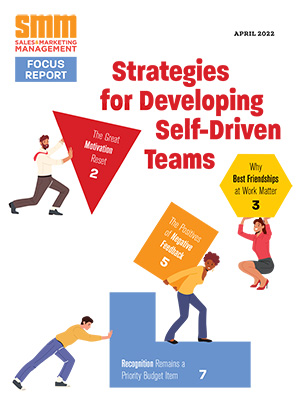
In the post-digital world of today, empowered customers have taken control of the relationship they have with the companies they interact with. Your customers now face a maze of media, devices, conversations, and interactions as they make decisions along their path to purchase. As marketers, you must engage customers in the right way across the entirety of the customer life cycle, from customers initially identifying a need to researching their options, making a purchase and using the product.
“To find new ways to stand out to the right audience with the right message at the right time, you must make a connection between your customers and your brand – not just once, but throughout the entire relationship you have with the customer,” says Sheryl Pattek, principal analyst at Forrester Research.
Pattek says maintaining a strong brand with a clear, compelling and relevant message in a customer-empowered world is a universal challenge, whether you’re marketing a Fortune 500 company or a political party. B2B marketing leaders are charged with putting their brand front and center – and making sure it accurately represents their company strategy, provides value to customers and delivers on its promises. Pattek shares these insights on how B2B marketers can grow their brands in the age of the empowered customer:
Strong brands deliver strong results. B2B companies with strong brands deliver 20 percent higher financial returns than those with weaker brands. Case in point, IBM, one of the world’s strongest B2B brands, has consistently grown its brand value since 2006. In a world where CMOs are held increasingly accountable for business growth, developing and strengthening your brand must be a key focus.
Empowered customers now define the “who, what, and how” of business relationships. Today, customers are fully in control of their buying journey, completing 60 percent of that journey before engaging with your company. Therefore, your brand must be strong enough to claim buyer mindshare early on – and own it across the entire buyer’s journey – establishing preference and maintaining that preference across all customer touchpoints.
Brands bring company strategies to life. Managed well, a strong B2B brand can go beyond establishing awareness of who you are and what you do. Your brand should serve as a guiding light that illuminates your organization’s direction, purpose and value, and provides clarity to all stakeholders.
As Pattek points out, “In today’s customer-empowered world, building a strong B2B can mean the difference between adeptly navigating increasingly complex terrain and getting lost in the wilderness.”
Identify a North Star to guide brand building efforts. To help you tell your story and show customers why they should do business with you, B2B brands must have a North Star that clearly illuminates what the brand stands for.
Treat your brand as a strategic asset. Considering that a brand’s potential financial value is higher than any other item on the corporate balance sheet, it’s time for B2B CMOs to start treating their brands as strategic assets. As with any other investment, it’s important to build a business case and have a well laid out plan for brand investments.



